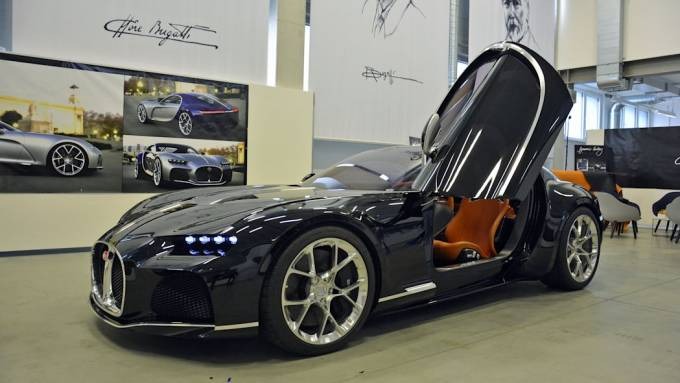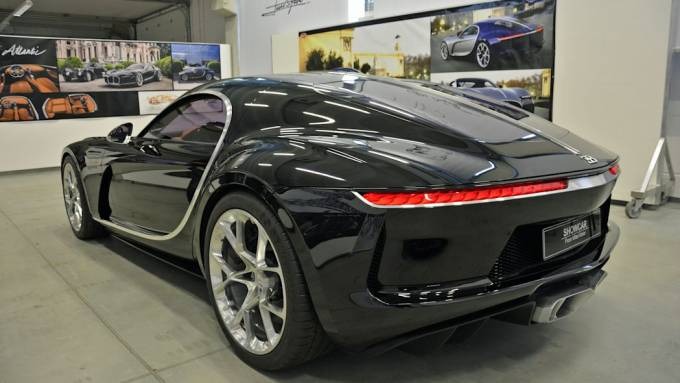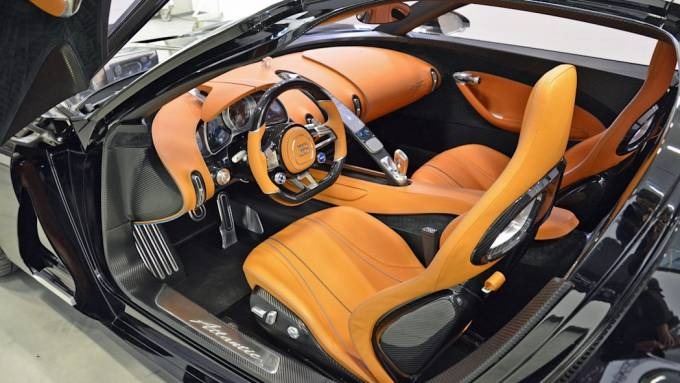The Bugatti Atlantic could have been the "entry-level" Bugatti
Few people know the mystery behind the Bugatti Atlantic. Apart from being named after the Type 57 SC Atlantic of the 1930s, it was supposed to sell alongside the Veyron and Chiron as an 'entry-level' Bugatti GT.Sure, you can say the ultra-exclusive La Voiture Noire is the true spiritual successor of the Type 57 SC, especially with its bold center line running from the hood to the trunk – a clear nod to the riveted construction of the original model – With a base price of 16.7 million Euro (or roughly $18.3 million), it's hard to deny the lineage behind the design inspiration of La Voiture Noire.
We beg to disagree. As a matter of fact, the Bugatti Atlantic should have been the true heir to Jean Bugatti's ultra-limited masterpiece. You see, only four Type 57 SC Atlantics were made between 1936 and 1938, and this explains why all three surviving examples are considered more valuable than diamonds and gold.
Apparently, the last remaining example is still missing as of this writing and is considered to be the most valuable piece of Bugatti's cherished history. Back then, the Bugatti Type 57 SC Atlantic was considered as the most beautiful and fastest car in the world. In essence, it's a 1930s supercar that's way ahead of its time. And if found, the elusive fourth Atlantic model could easily fetch upwards of $113 million at auction.

Meanwhile, the modern Atlantic has all the makings of the Type 57 SC, something the La Voiture Noire can never claim. Even though the new Atlantic was supposed to be an 'entry-level' Bugatti, it has all the ingredients on what makes the Type 57 so great in the first place.
Unlike La Voiture Noire with a W16 engine in the rear, the Atlantic has a front-midship arrangement like the Type 57. It's also a 2+2 with enough room for luggage and small cargo. It also has a pair of magnificent butterfly doors. In other words, it's a modern iteration of the Type 57 SC, and it's a shame the automotive world was denied the privilege of having a production-model Atlantic.

In fact, Bugatti was planning to release two new coupes to complement the Chiron – the Atlantic and Veyron Barchetta, the latter of which is a proper speedster with no roof and a wraparound windshield. But unlike the Veyron Barchetta, the Atlantic was supposed to sell at half the price of a Chiron, which should have been good news for the mid-level elite who wants a Bugatti that doesn't cost upwards of $2 million.
Unfortunately, Dieselgate reared its ugly head in late 2015 and spelled the end for the Atlantic (and the Veyron Barchetta, for this matter). And it's a shame considering the Atlantic is the most unique Bugatti we've seen in a while. In fact, the last Bugatti to have crazy doors was the iconic Bugatti EB110 supercar with scissor-style doors.
The Atlantic benefitted from a carbon-fiber monocoque construction and 50:50 weight distribution. It also has a smaller V8 engine mounted behind the front wheel's centerline and a rear-mounted transmission. The Bugatti Atlantic is a mishmash of components from the VW parts bin, but you wouldn't know that just by looking at the car, especially if you shift your attention to the cabin with its saddle leather upholstery and modernist center console. And since the engine is mounted in the front, the Atlantic has a cab-rearward design with a long hood, short overhangs, and the stance of a muscle car.

But what's really interesting about the Atlantic is powertrain choices. Back in 2015, Bugatti wanted to sell the Atlantic with a choice between gasoline or all-electric propulsion. If you choose the latter, you get four electric motors and a large battery pack. If the Atlantic made it to production, it would have been the first production all-electric supercar and Bugatti would have been among the first to release an all-electric model among conventional automakers.

As with all things in life, it's never too late for second chances. Now that all carmakers are striving towards electrification, the Atlantic serves as the ideal starting point for an electric or hybrid Bugatti supercar. Now that we've seen it, we can't help but think what could have been if the Atlantic was given the go signal.
